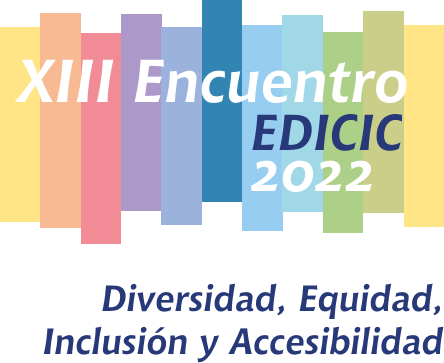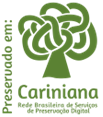Inventario participativo como herramienta viable para la representación de la información en los museos comunitarios
DOI:
https://doi.org/10.62758/re.v2i4.153Palabras clave:
Inventario Participativo, Museos Comunitarios, Representación de la InformaciónResumen
Se trata de discutir las propiedades del Inventario Participativo para el empoderamiento de las comunidades, y las posibilidades de acercamiento con la interfaz de tratamiento informativo. Esta es una investigación de carácter bibliográfico, y utiliza como enfoque metodológico la observación directa y la revisión de conceptos en Gomes (2012), Nito y Scifoni (2017), Repep (2019), Bittencourt (2020). Como resultados, se observó que los inventarios participativos se alzan como importantes herramientas representativas. En su cuerpo, la información no se limita a los datos descriptivos del espacio, sino que integra todas las relaciones y significados socioculturales que tiene una comunidad. Por último, también se propuso un debate sobre los espacios y objetos museísticos no convencionales, basado en la identificación de los lugares y las relaciones cotidianas que, en su mayoría, son portadores del núcleo cultural de un determinado grupo social.
Citas
Bittencourt, N. M. B. (2020). O fluxo e a representação da informação no inventário de referências culturais: o caso do Auto do Círio e o registro do Círio como Patrimônio Cultural Imaterial em Belém/PA [Dissertação de Mestrado, Universidade Federal do Pará].
Cunha, J. D. M. (2018). Participação social na política de patrimônio imaterial do Iphan: análise de diretrizes, limites e possibilidades. Revista CPC, 13(25), 60-85. https://doi.org/10.11606/issn.1980-4466.v0i25p60-85. DOI: https://doi.org/10.11606/issn.1980-4466.v0i25p60-85
Florêncio, S. R. R. (2016). Educação Patrimonial: inventários participativos: manual de aplicação/Instituto do Patrimônio Histórico e Artístico Nacional.
Florêncio, S. R. R. & Biondo, F. G. (2017). Inventários Participativos como Instrumentos de Educação Patrimonial e Participação Social. In L. Amaral & C. Rocha (Eds.), Patrimônios Possíveis: Arte, Rede e Narrativas da Memória em Contexto Iberoamericano (pp. 50-57). PublicaCiar.
Gomes, A. O. (2012). Aquilo é uma coisa de índio: objetos, memória e etnicidade entre os Kanindé do Ceará [Dissertação de Mestrado, Universidade Federal de Pernambuco].
Nito, M. K. & Scifoni, S. (2017). O patrimônio contra a gentrificação: a experiência do Inventário Participativo de Referências Culturais do Minhocão. Revista do Centro de Pesquisa e Formação do Sesc, 5, 38-49.
Nora, P. (1984) Les lieux de mémoire – I: La République. Gallimard.
Repep (2019). Dossiê do Inventário Participativo Minhocão contra gentrificação. Grupo de Trabalho Baixo Centro da Rede Paulista de Educação Patrimonial.
Silva, E. M. V. (2020). A Importância do Inventário Participativo na Preservação do Patrimônio Cultural. Revista Discente Ofícios de Clio, 5 (8), 204. DOI: https://doi.org/10.15210/clio.v5i8.19051
Varine, H. (2012). As raízes do futuro: o patrimônio a serviço do desenvolvimento local. Medianiz.
Descargas
Publicado
Cómo citar
Número
Sección
Licencia
Derechos de autor 2022 Revista EDICIC

Esta obra está bajo una licencia internacional Creative Commons Atribución 4.0.
La Asociación posee los derechos de autor de los textos que publica y adopta la licencia Creative Commons, CC BY 4.0 DEED Atribución 4.0 Internacional (https://creativecommons.org/
Usted es libre de:
- Compartir: copiar y redistribuir el material en cualquier medio o formato para cualquier propósito, incluso comercialmente.
- Adaptar: remezclar, transformar y construir a partir del material para cualquier propósito, incluso comercialmente.






